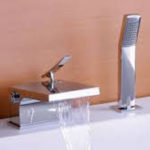The first step is to journalize an additional adjusting entry on 10/1 to capture the additional nine months’ depreciation. The first step is to determine the book value, or worth, of the asset on the date of the disposal. Book value is determined by subtracting the asset’s Accumulated Depreciation credit balance from its cost, which is the debit balance of the asset. A company may no longer need a fixed asset that it owns, or an asset may have become obsolete or inefficient.
The useful life and salvage value you would have used to figure straight-line depreciation are the same as those used under the depreciation method you actually used. Additional depreciation includes all depreciation adjustments to the basis of section 1250 property whether allowed to you or another person (as carryover basis property). Depreciation and amortization that must be recaptured as ordinary income include (but are not limited to) the following items. On property you acquired in a nontaxable exchange or as a gift, your records must also indicate the following information.
If you previously made an election to defer the inclusion of capital gain in gross income by investing such capital gain in a QOF, and now you have sold or exchanged the QOF investment, you must now include into income the deferred gain. If you held the QOF investment for more than 5 years, you may be able to exclude, in part, the capital gain that you would otherwise include in income. See the Instructions for Form 8949 for details on how to report the deferred gain. You transfer property worth $35,000 and render services valued at $3,000 to a corporation in exchange for stock valued at $38,000. Right after the exchange, you own 85% of the outstanding stock.
How to Calculate the California Tax Gain
You determine the cost of the portion of the building attributable to the old elevator is $5,000. Depreciation deducted on the old elevator portion of the building was $2,500 before its sale. The sale of the elevator is a sale of a portion of a MACRS asset, the building.
- If you have held low-income housing for at least 16 years and 8 months, the percentage is zero and no ordinary income will result from its disposition.
- Any gain or loss on the part of the home used for business is an ordinary gain or loss, as applicable, reportable on Form 4797.
- This type of loss can be caused by several factors, including market fluctuations in asset values, technological obsolescence or damage to the equipment.
- In determining whether an individual directly or indirectly owns any of the outstanding stock of a corporation or an interest in a partnership for a loss on a sale or exchange, the following rules apply.
- If you do not make payments you owe on a loan secured by property, the lender may foreclose on the loan or repossess the property.
In some cases, companies may also dispose of their assets before it reaches the end of their useful life. Either way, selling fixed assets are common for companies. An asset is any resource owned or controlled by a company that leads to future inflows of economic benefits. For example, assets for a production company may consist of machinery, factory, inventory, receivables, cash, etc. These items are crucial in running a business and operating to generate revenues.
How to Deduct Final Expenses After a Dissolution of a C Corporation
The buyer paid cash payment immediately after receiving the equipment. Usually, companies acquire fixed assets that contribute to their operations. They keep these assets until the resource reaches the end of its useful life. At this point, the underlying fixed asset may have a salvage value, which companies can get from selling it.
How do proceeds on the Sale of Fixed Assets affect the Cash Flow Statement?
TAS can provide a variety of information for tax professionals, including tax law updates and guidance, TAS programs, and ways to let TAS know about systemic problems you’ve seen in your practice. TAS works to resolve large-scale problems that affect many taxpayers. If you know of one of these broad issues, report it to them at IRS.gov/SAMS.
The Main 4 Advantages and 4 Limitations of Cash Flow Statement You Should Know
To remove this equipment, we need to make a journal entry of debiting accumulated depreciation and credit cost of equipment. If you had any nonrecaptured net section 1231 losses from the preceding 5 tax years, https://accounting-services.net/loss-on-sale-of-equipment-definition-and-meaning/ reduce your net gain by those losses and report the amount of the reduction as an ordinary gain in Part II. Report any remaining gain on Schedule D. See Section 1231 Gains and Losses in chapter 3.
If you and your spouse once filed separate returns and are now filing a joint return, combine your separate capital loss carryovers. However, if you and your spouse once filed jointly and are now filing separately, any capital loss carryover from the joint return can be deducted only on the return of the spouse who actually had the loss. Figure ordinary income attributable to each separate element as follows. Figuring ordinary income attributable to each separate element. Low-income housing includes all of the following types of residential rental property. The term “renewal period” means any period for which the lease may be renewed, extended, or continued under an option exercisable by the lessee.
loss on sale of assets definition
In this case, the disposal accounting is much more likely to result in a recognized loss, since the assumption is that the asset still had some of its useful life left when it was lost. This includes a net loss or a recapture of losses from prior years figured in Part I of Form 4797. On your joint 2022 return, you and your spouse can deduct $3,000, the yearly limit. The unused part of the loss, $4,000 ($7,000 − $3,000), is carried over to 2023. For information on nonbusiness bad debts, see chapter 4 of Pub.
You use the whole payment to buy property similar in use, spending $42,000 for depreciable real property and $48,000 for land. You choose to postpone reporting the $60,000 gain realized on the involuntary conversion. Of this gain, $10,000 is ordinary income from additional depreciation but is not reported because of the limit for involuntary conversions of depreciable real property.
For any other disposition of section 1245 property, ordinary income is the lesser of (1), earlier, or the amount by which its fair market value is more than its adjusted basis. Any gain recognized that is more than the part that is ordinary income from depreciation is a section 1231 gain. See Treatment as ordinary or capital under Section 1231 Gains and Losses, earlier. A sale, exchange, or involuntary conversion of property held mainly for sale to customers is not a section 1231 transaction.
























































































